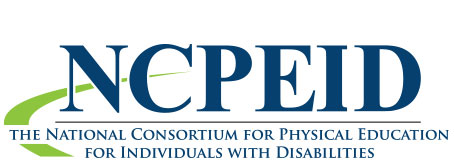Structure of the APENS
The content in each standard area was divided into five levels as shown in the example below:
-
Level 1: Standard Number and Name (e.g., 2. Motor Behavior)
-
Level 2: Major components of the Standard (e.g., Theories of Motor Development, Principles of Motor Learning, etc.)
-
Level 3: Sub-components, dependent pieces of knowledge of fact or principle related to the major component that all regular educators would be expected to know (e.g., stages of learning, knowledge of types of feedback, etc.)
-
Level 4: Adapted physical education content - additional knowledge regarding the sub components that teachers working with individuals with disabilities need to know (e.g., common delays in development experienced by individuals with severe visual impairments)
-
Level 5: Application of adapted physical education content knowledge from (level 4) to teaching individuals with disabilities (e.g., can identify and interpret motor performance delays in children with disabilities)
The first three levels of each standard represent content that should be known by all physical educators. The level 4 content represents the additional content adapted physical educators need to know to meet the roles and responsibilities of their positions. Level 5 contains example applications of the level 4 content that adapted physical educators would be expected to be able to demonstrate.
Individuals preparing to take the APENS exam should focus most of their attention on the levels 4 and 5 content areas as these will be the most valuable areas related to the knowledge and application specific to the profession of adapted physical education.
|
